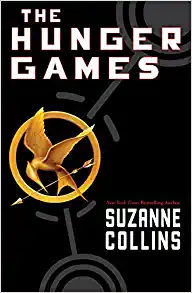
The Hunger Games by Suzanne Collins
Hi, I am Sarah. I am fourteen years old and an avid reader; it is one of my favorite things to do. Inspired by authors’ creations of magnificent places and surprising havens built by simple letters, I aspire to be an author and, meanwhile, nurture the love to write.
Imagine living in a world in which, every year, you must stand in utter terror, waiting for your name to be drawn. If it is, it condemns you. If you don’t hear it, you thank your lucky stars that it wasn’t you, that you are safe for another year, safe from the dreaded Reaping. Safe from the Hunger Games.
The Hunger Games: a gladiator-style, nationwide fight to the death, intended to keep the 12 districts surrounding the Capitol of Panem from revolt. But those twenty-four in the arena? They’re kids: twelve-to-eighteen-year-olds that have been chosen from their districts; one male, one female.
Maybe you don’t live in Panem, but Katniss Everdeen does. Katniss must stand dreading, every year, for her name to be called. Now, at sixteen, her name has yet to be chosen. This year, her name isn’t the one pulled from the bowl.
But her sister’s is.
When Primrose Everdeen’s name is called, Katniss can’t let her be killed by another, bloodthirsty competitor. So she does the only thing she can: she volunteers for the Hunger Games. Prepared to die, so another can live.
Before leaving for the Capitol, Katniss makes her sister a promise: a promise that she’ll try to stay alive and try to win. And with that promise in her heart, she boards a train heading for the Capitol.
Exploring themes of aristocracy and dictatorship, friendship and family, independence and oppression, Suzanne Collins weaves a masterpiece of a novel. With the rifts between the Capitol and the districts triggering unrest and hatred, this book is a warning of sorts, but also defines what it means to be free.
